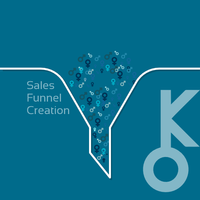Lessons Learned from Failed Funnels
In the realm of sales funnel creation, case studies serve as valuable resources that offer insights into real-world scenarios. Examining failed funnels and the lessons learned from them can help marketers and entrepreneurs improve their strategies and enhance their chances of building successful sales funnels.
A case study is a detailed analysis of a particular situation or problem, aiming to identify what went wrong, why it did so, and how it could have been improved. When applied to sales funnel creation, case studies provide an opportunity to explore different aspects such as audience targeting, messaging, lead generation techniques, conversion optimization, and more.
Understanding the reasons behind the failure of various sales funnels provides important lessons that can shape future campaigns and prevent similar mistakes. By examining these examples closely, individuals can gain a better understanding of what works and what doesn't when it comes to capturing leads and nurturing them through the buying journey.
Benefits of Studying Failed Sales Funnels:
- Identifying Potential Pitfalls: Analyzing failed sales funnels allows marketers to identify potential pitfalls early on in their own campaign development process. By understanding common mistakes made by others—such as weak value propositions or lackluster call-to-actions—it becomes easier for marketers to avoid those same missteps.
- Gaining Insight Into Target Audience Behavior: Failed funnels present opportunities for marketers to dive deeper into their target audience's behavior patterns. Examining user feedback (when available) and analyzing data related to conversion rates or page abandonment can reveal critical insights about what resonates with potential customers—and what turns them away.
- Improving Conversion Rates: Learning from failed sales funnels empowers marketers with knowledge that helps optimize their own conversion rates effectively. Implementing changes based on identified pain points experienced by users in unsuccessful campaigns aids in creating smoother transitions between stages within a sales funnel, resulting in higher conversion rates.
- Enhancing User Experience: Failed funnels often highlight instances where the user experience fell short of expectations. By studying these scenarios, marketers can improve the overall user experience by incorporating better design elements, ensuring intuitive navigation, and reducing friction points throughout the funnel.
Lessons Learned from Failed Sales Funnels:
Inadequate Attention to Target Audience:
- Lack of proper audience research prevents marketers from understanding their target market's needs and preferences fully. Without this essential knowledge, it becomes difficult to craft compelling messaging that resonates with potential customers.
- Lesson: Dedicate time and effort to conduct thorough audience research to gain insights into pain points, motivations, and desires of the target audience.
Weak Value Proposition:
- A weak value proposition fails to communicate the unique benefits or advantages a product or service offers over competitors'. This results in a lack of motivation for prospects to move forward within the funnel.
- Lesson: Craft a strong value proposition that clearly articulates the value your offering brings to customers while highlighting what sets it apart from others in the market.
Poor Lead Generation Techniques:
- Utilizing ineffective lead generation strategies like relying solely on one channel or failing to leverage multiple touchpoints leads to low-quality leads or missed opportunities.
- Lesson: Implement various lead generation techniques such as content marketing, social media advertising, search engine optimization (SEO), email marketing campaigns, and strategic partnerships to boost lead quality and quantity.
Insufficient Trust-building Elements:
- Failing to establish trust with potential customers hinders progress through the sales funnel. If credibility is lacking—such as missing customer reviews/testimonials or inadequate social proof—it becomes challenging for users.
















